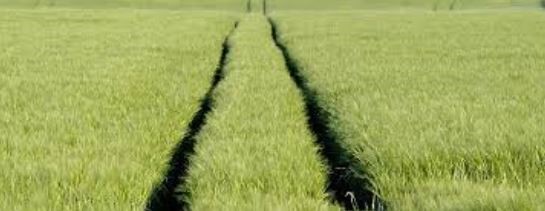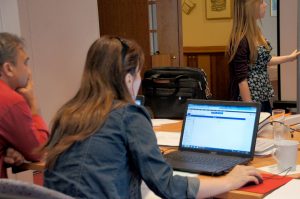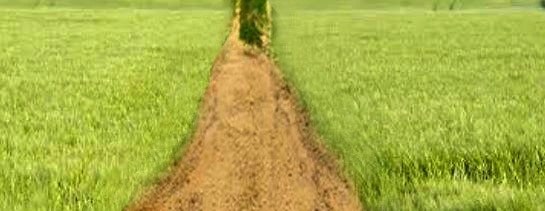Contents
How does learning work?
Learning is a change or modification in knowledge, skills, behaviour by practice or experience. Learning must be seen as a process. Basically, learning results are not permanent, and usually learning results are forgotten (following an exponential formula).
Learning itself cannot be measured, but the results can be evaluated by various methods. This can be as well self-assessment as external assessment.
Brain research
The brain contains billions of so-called neurons. These are nerve cells organized in patterns.
The brain consists of about 100 billion cells called neurons and up to 5 times as many supporting or glial cells.
In complex multicellular animals, such as insects and mammals, various types of neurons form signaling circuits. The simple type of circuit is called the reflex arc. Interneurons connect multiple sensory and motor neurons, allowing one sensory neuron to affect multiple motor neurons and one motor neuron to be affected by multiple sensory neurons. In this way, interneurons integrate and enhance reflexes.
There are regions in the brain that are dedicated to performing different functions, for example, to register and process light or sound information, while other regions are responsible for movements and sensibility.
All regions in the brain must work together, so the most advanced brain functions become activated. In this way, “the brain works as a whole”.
Very little is known about the ways that mental processes are performed within the brain. The regulation of sensory influx has been studied with regard to vision and hearing. There are special units that process visual information comprised of neuronal circuits that recognize straight lines and horizontal and vertical structures. There are similar units for other signal types, but also other, more adaptable ones. Such units can be unconsciously activated in order to suppress background noise or prevent it from reaching conscious hearing. For instance, when a low-frequency fan that has been working for a few hours, is turned off we become relaxed. This indicates that the unconscious mental process of suppressing the background noise requires energy.
It is also possible to recruit, shape, and/or activate such units consciously. In a similar way to unconscious suppression of background noise etc., active and conscious suppression requires energy as well. Mental functions which have been formed under normal conditions function optimally in similar conditions. Should the conditions change, the precision of the functions could be impaired, which may lead to increased uncertainty in the processes and thereby also increased energy consumption.
Memory
The “working memory” (often called short-term memory) is located in the prefrontal part of the brain. It has the ability to store approximately seven items for the timeframe of about one minute. It is a kind of pre-processor of the memory. If you need information stored for a longer time, the inner parts of the brain get activated and you can memorize the items for a longer time. Nevertheless, you will forget these items quickly as you don’t use these memories regularly.
Memory and learning are so closely connected that people often confuse them with each other. But the specialists who study them consider them as two distinct phenomena.
These specialists define learning as a process that will modify a subsequent behavior.
Memory, on the other hand, is the ability to remember past experiences.
You learn a new language by studying it. Later, you speak it by using your memory to retrieve the words that you have learned.
Memory is essential to all learning because it lets you store and retrieve the information that you learn. Memory is basically nothing more than the record left by a learning process.
Thus, memory depends on learning. But learning also depends on memory, because the knowledge stored in your memory provides the framework to which you link new knowledge, by association. And the more extensive your framework of existing knowledge is, the more easily you can link new knowledge to it. (adapted from The brain from Top to Bottom, https://thebrain.mcgill.ca/flash/d/d_07/d_07_p/d_07_p_tra/d_07_p_tra.html. accessed on 1/6/2019)
Model of the brain
Information is stored in the brain by building connections between neurons.
These connections can be deepened by frequent use of these connections. The more often a person used these connections the better they are kept in memory.

This can be compared with a meadow. A car drives through the fresh meadow and presses down the grass leaving a trace.
The brain works similarly. Once you have created your connection of neurons, a so-called engram (comparable with the first trace) you may use this engram again and again – for example by reviewing the content, watching the same images for several times, or by writing the content or panting an image of the content.
This is the way how you create a long-lasting memory. This means that stored information changes the physical structure of your brain continuously when you process your impressions, your feeling, or another sense.
Learning as information procurement versus sustained learning
Learning is defined as a change or modification in knowledge, skills, behavior by practice or experience. The input to your brain is processed in the working memory. But what you stored there is as quickly forgotten as it has been stored.
The corkscrew experiment
Here is an example (called the corkscrew experiment):
In the corkscrew experiment, the trainer shows the learners 5 different words for the term “Corkscrew” (in exotic languages). They have 30 seconds time to memorize. After this time the trainer continues with the training. After the training (should be between half an hour and an hour) the trainer gives some sheets of paper to the trainees and they should write down the terms for corkscrew they remember.
The result is always similar (in all age groups): 5 % to 10 % can remember one word, all the others do not remember any of the exotic language words.
This is an example of how the so-called “learning” is done today.
Learning with a smartphone
When you learn using a smartphone you search for something, get feedback, read what you have found, and you think you have learned. But – you will forget the information very quickly (in the worst case within a minute).
So – what did you do when you thought you are learning? You found the required information and have realized this. But you won’t remember this information for a long time. It is volatile information.
You must care for longer-lasting learning results. This type of learning is called sustained learning. The term of sustained learning has been used in this context by Peter Mazohl in the frame of the TIBL Erasmus+ Project https://www.tibl-project.eu/)
Sustained Learning
Learning typically works as described above:
- You hear something new (or get some new information, see something …)
- Your brain processes the information (which always is “small” information)
- The connection of the neurons is built
- After some time, when you have not used the newly gained knowledge again, the connection is dissolved – you have forgotten what you have learned
Basically, what is learned can be classified as “knowledge”. skills or behavior result from further connections (using the knowledge).
Sustained learning means that you remind the information for a longer time – this should be the “actual result” of learning. The connections between the neurons can be enlarged (or deepened) by specific environmental conditions. This leads to a better reminiscence of what you have learned. This type of learning is called sustained learning.
The term of sustained learning has been used in this context by Peter Mazohl in the frame of the TIBL Erasmus+ Project (https://www.tibl-project.eu/)
Sustained Learning Methods
Some facts
- Practice increases the learning
Practice that creates new neuronal networks are the most efficient - The amount of experiences (in a complex learning environment) Is directly proportional to the number of changes in the brain. The enhancement depends on the environment (group-based learning, project-based learning)
- Learning structures and reorganizes the brain
- Emotions have an enormous influence on learning (enabling better learning or blocking the learning).
- Create a safe environment (1).
Safe Learning environments must challenge participants to move outside their comfort zone and allow them to grow and practice new skills. This is where the “conscious” part of sustained learning practice comes in.
Trainees explore and try out new ideas and techniques in a safe, supportive space. It’s an important part of the learning experience. Trainees must be pushed outside their comfort zone, doing over-the-top expressions, gestures, vocal exercises, sometimes even being filmed presenting. In such an environment, they are able to make mistakes and learn from them without the stress of being in an operational work context.
- Personalized training content
Personalized training content facilitates the application of new skills. It is widely accepted that everyone learns differently. It is not an effective one-size-fits-all approach to training the case of a single trainer in working with different personalities.
Training content must be adapted to the needs of each group in order for it to be relevant. The training designer must take into account the trainees’ characteristics and create the content or stories they can relate to.
- Learning “little and often”
This facilitates long-term behavior change. One of the reasons workplace training programs fail is because participants are unable to apply what they have learned. Recent research 2 shows that micro-learning, or learning in bite-sized chunks, makes the transfer of learning from the classroom to the desk 17 % more efficient.
Learning “little and often” allows trainees to engage with new information more deeply (50% more, according to research. By breaking down large amounts of training content into small chapters, you help the brain to process and retain that information better. It’s much easier to introduce small (or micro) learning moments to employees’ work contexts.
Flipped Learning is a sustainable learning method. Here are some facts describing how sustainable learning works with Flipped Learning:
- Flipped Learning is active learning
- Learners have to do something during the learning process
- Flipped Learning uses multimedia and interactivity
- Different learning spaces enable the deepening of learning results
- and …
You will find more information about this topic in the “Flipped Learning Guide”.
(1) Adapted from Alison Carter (2019), “Sustained learning: A modern approach for results-driven L&D professionals”, https://www.colinjamesmethod.com.au/results-driven-sustained-learning/, accessed on 01/06/2019
Über die Autoren
Peter Mazohl ist Lehrer in höheren Schulen und Lektor an der Technischen Universität Wien, Österreich. Michail Filioglou ist Lehrer in höheren Schulen und Trainer in der Lehrerausbildung in Athen, Griechenland. Harald Makl ist Lehrer in höheren Schulen und unterrichtet an der Pädagogischen Hochschule in Baden, Österreich.


